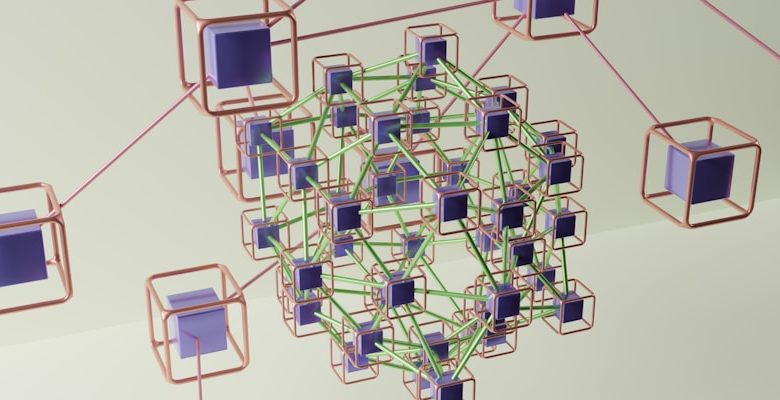Kusama (KSM): The Polkadot Test Network

- What is Kusama (KSM) and how does it relate to Polkadot?
- Exploring the role of Kusama as a test network for Polkadot
- The key features and advantages of Kusama (KSM)
- How Kusama (KSM) contributes to the development of the Polkadot ecosystem
- Understanding the relationship between Kusama (KSM) and Polkadot parachains
- The potential impact of Kusama (KSM) on the future of blockchain interoperability
What is Kusama (KSM) and how does it relate to Polkadot?
Kusama (KSM) is a canary network for Polkadot, designed to serve as a proving ground for new features and upgrades before they are implemented on the main Polkadot network. Kusama acts as a live testing environment where developers can experiment with different functionalities, changes, and upgrades without risking the stability of the Polkadot network.
Kusama is often referred to as the “wild cousin” of Polkadot, as it allows for more experimentation and risk-taking compared to the more conservative approach of Polkadot. This makes Kusama a valuable platform for testing new ideas and innovations in a real-world setting before they are deployed on Polkadot.
In terms of how Kusama relates to Polkadot, Kusama shares many similarities with Polkadot in terms of its architecture and design principles. Both networks are built on the same codebase and share the same underlying technology, including the Substrate framework. However, Kusama is designed to be more agile and flexible, allowing for faster iteration and experimentation.
Overall, Kusama and Polkadot are closely related networks that work in tandem to drive innovation and development in the blockchain space. Kusama serves as a valuable testing ground for new ideas, while Polkadot provides a more stable and secure environment for deploying these ideas at scale. Together, they form a powerful ecosystem that is pushing the boundaries of what is possible in blockchain technology.
Exploring the role of Kusama as a test network for Polkadot
Exploring the role of Kusama as a test network for Polkadot is essential in understanding the functionality and capabilities of the broader ecosystem. Kusama serves as a live environment where developers and users can experiment with new features and upgrades before they are implemented on the main Polkadot network.
This testing ground allows for the identification of any potential issues or vulnerabilities that need to be addressed before going live on the main network. By using Kusama as a testing platform, developers can ensure a smoother deployment process and minimize the risk of disruptions to the Polkadot network.
Moreover, Kusama provides a platform for developers to test out new ideas and innovations without the constraints of the main network. This flexibility encourages creativity and exploration, leading to the development of new applications and solutions that can enhance the overall Polkadot ecosystem.
The key features and advantages of Kusama (KSM)
Kusama (KSM) offers a range of key features and advantages that make it a unique and valuable network in the cryptocurrency space. One of the main advantages of Kusama is its role as a test network for Polkadot, allowing developers to test their projects in a real-world environment before deploying them on the main Polkadot network. This helps to ensure that projects are secure and stable before they go live, reducing the risk of bugs and vulnerabilities.
Another key feature of Kusama is its governance system, which allows KSM holders to participate in the decision-making process for the network. This gives users a say in how the network is run, helping to ensure that it remains decentralized and responsive to the needs of its community. Additionally, Kusama’s unique design allows for fast transaction speeds and low fees, making it an attractive option for users who value efficiency and affordability.
Overall, Kusama (KSM) offers a range of advantages for developers and users alike. Its role as a test network for Polkadot, its governance system, and its fast transaction speeds and low fees make it a valuable addition to the cryptocurrency ecosystem. Whether you are a developer looking to test your project or a user in search of a fast and affordable network, Kusama has something to offer for everyone.
How Kusama (KSM) contributes to the development of the Polkadot ecosystem
Kusama (KSM) plays a crucial role in the development of the Polkadot ecosystem. As a canary network for Polkadot, Kusama serves as a testing ground for new features and upgrades before they are implemented on the main network. This allows developers to experiment with different functionalities and identify any potential issues or bugs before they impact the stability of Polkadot.
By providing a platform for rapid iteration and innovation, Kusama helps to accelerate the development process of new technologies within the Polkadot ecosystem. This not only benefits developers by enabling them to test their ideas in a real-world environment but also ensures that Polkadot remains at the forefront of blockchain innovation.
Furthermore, Kusama’s unique governance structure allows its community members to vote on proposed changes and upgrades, giving them a voice in the evolution of the network. This decentralized approach to decision-making fosters a sense of ownership and responsibility among participants, ultimately leading to a more robust and resilient ecosystem.
Overall, Kusama’s contributions to the Polkadot ecosystem are invaluable in driving progress and innovation within the blockchain space. By providing a platform for experimentation and collaboration, Kusama helps to ensure that Polkadot remains a cutting-edge network that is capable of meeting the demands of a rapidly evolving digital landscape.
Understanding the relationship between Kusama (KSM) and Polkadot parachains
The relationship between Kusama (KSM) and Polkadot parachains is essential to understanding the interoperability and scalability of the Polkadot network. Kusama serves as the experimental, early-warning system for developers looking to deploy their projects on Polkadot. It allows them to test their parachains in a real-world environment before committing to the more secure and stable Polkadot network.
Parachains on Polkadot are individual blockchains that run in parallel, connected to the main Polkadot relay chain. Kusama provides a platform for developers to test their parachains’ functionality, security, and interoperability before connecting them to the more production-ready Polkadot network. This process helps identify and address any potential issues or vulnerabilities before going live on Polkadot.
By understanding the relationship between Kusama and Polkadot parachains, developers can take advantage of the testing environment provided by Kusama to ensure a smooth transition to the Polkadot network. This collaboration between the two networks enhances the overall ecosystem of Polkadot, promoting innovation and scalability in the blockchain space.
The potential impact of Kusama (KSM) on the future of blockchain interoperability
The potential impact of Kusama (KSM) on the future of blockchain interoperability is significant. As a test network for Polkadot, Kusama plays a crucial role in testing new features and upgrades before they are implemented on the main Polkadot network. This testing environment allows developers to experiment with different ideas and innovations without risking the stability of the main network.
By providing a platform for developers to test and deploy new technologies, Kusama contributes to the overall growth and development of the blockchain ecosystem. Its ability to support interoperability between different blockchains also opens up new possibilities for cross-chain communication and collaboration.
Furthermore, Kusama’s governance model allows participants to propose and vote on changes to the network, ensuring that it remains decentralized and community-driven. This level of transparency and inclusivity sets a positive example for other blockchain projects to follow.



